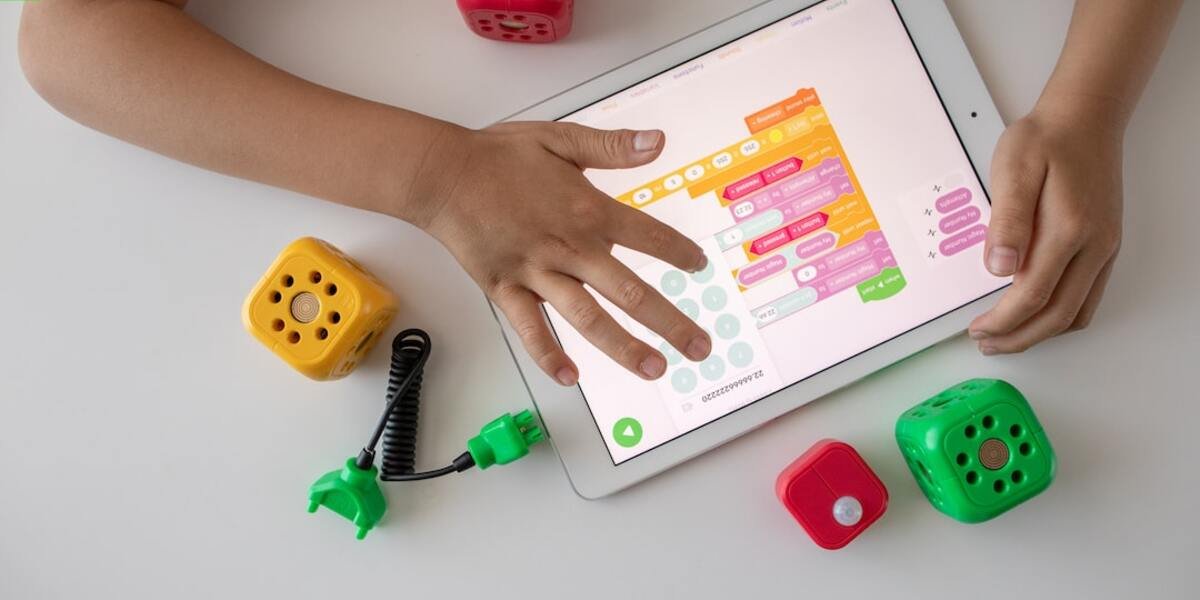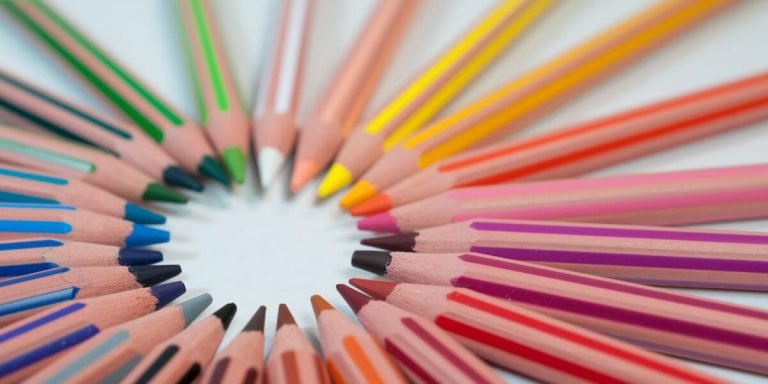How to Get Better Grades in Middle School: An Effective Approach for Parents and Educators
Decoding the complex puzzle of “how to get better grades in middle school” can be challenging for both parents and educators. It involves a balanced mix of motivation, learning techniques, organization skills and consistent effort from students. However, guiding our youngsters through this journey doesn’t have to be confusing with the right approach.
The transition from elementary to middle school is often marked by an increased academic workload that demands more independent study habits. This period becomes crucial as it sets the foundation for high-school further down their educational path. As such, aiding them in achieving better grades not only boosts their self-esteem but also primes them for future scholastic success.
Did you know?
When parents actively involve themselves in their child’s education, research from the American Psychological Association indicates a significant improvement in academic performance and grades at the middle school level.
Strategies for Improved Academic Performance in Middle School
Achieving better grades in middle school is a goal within every student’s reach. A key strategy lies in embracing technology and integrating it into the educational process. As we live in an increasingly digital world, our middle schools must adapt to this evolving landscape as well.
With the integration of technology into education becoming mainstream, there are several ways students can leverage modern tools for improved academic performance. Digital resources like online tutorials, learning management systems or interactive games make studying more engaging and effective than traditional methods alone.
The utilization of these tech-based approaches enhances understanding by bringing theoretical concepts to life through visual representations or simulations. It allows students access to wide ranging information at their fingertips while providing opportunities for self-paced learning experience indulging them deeply into subjects which might seem tricky initially.
Similarly language arts classes could see substantial benefits from writing editing softwares such as Grammarly where kids can learn grammar rules interactively on-the-go ensuring they don’t just improve academically but also holistically enhancing their communication skills. Many social platforms enable collaboration between classmates promoting peer-to-peer support networks all adding up towards creating a conducive environment helping children get those desired higher grades.
Setting SMART Goals for Studying Success
Understanding how to get better grades in middle school can sometimes be a tricky task for students, parents and educators. One effective way is by setting SMART goals for studying success which revolves around the integration of technology in education.
Specifically, the acronym “SMART” stands for Specific, Measurable, Attainable, Relevant and Time-bound. These attributes are crucial when formulating an effective study plan that aligns with improving academic performance particularly at this pivotal stage – Middle School Education.
Firstly creating ‘Specific’ objective means defining what you want to achieve acadically. For instance instead just saying I would like to improve my Grade in Math could translate into- I wish acquire 90% score on my next math test.
With technological advancement today we have various digital tools or apps designed specifically keeping these specific benchmarks of children learning capacity aiding them understand where they stand & where aim to reach.
Next comes ‘Measurability’. Keeping track progress should not merely revolve about passing exams but understanding concepts completely which will later help build strong foundational pillars leading successful high schooling too.
Time Management Techniques for Efficient Learning
Understanding the importance of time management can be a game changer in how to get better grades in middle school. It allows students to utilize their study hours effectively, leading to improved academic performance. This section discusses efficient learning through effective use of technology.
Firstly, it’s critical for parents and educators alike to recognize that every student has different strengths and weaknesses that affect both their learning style as well as pace. By integrating digital tools such as personalized online tutorials or educational apps tailored towards these varying styles, we make education more accessible and engaging for all types of learners.
Next comes task prioritization – being able just two complete assignments based on urgency helps alleviate stress from last-minute cramming sessions while also guaranteeing good quality work is submitted promptly which boosts scores significantly! Various scheduling software are available today making this job easier than ever before; not only do they remind users about upcoming tasks but also help breakdown larger projects into smaller actionable parts thereby reducing feelings overwhelmedness among students too!
Enhancing Study Habits to Boost Middle School Grades
As our society becomes increasingly digital, parents and educators are seeking effective ways to integrate technology into the learning process. One area where this integration has proved beneficial is in enhancing study habits to boost middle school grades. With tech tools available at their fingertips, students can now gain stronger command over various subjects which subsequently reflects in better academic performance.
It’s crucial for both teachers and parents understand that traditional methods of rote memorization or hours-long study sessions may not hold the same effectiveness anymore. In today’s world, resources like educational apps, websites and online forums provide an interactive environment making it easier for youngsters to absorb knowledge without feeling overwhelmed or bored.
Technology also allows customization catering specific needs of each learner such as visual aids for visual learners or podcasts for auditory ones. Features such as progress tracking give a real-time insight into student’s strengths and areas needing improvement thereby offering targeted guidance on how they can improve grades while still maintaining interest in learning.
Incorporating gadgets like tablets during tutoring sessions contributes significantly towards getting better grades since these devices offer a vast array of features supporting collaborative work including sharing notes instantly with peers providing better understanding through discussion leading consequently improved performances academically — all resulting from integrating technology effectively within education system.
The Role of Active Reading and Note-Taking Skills
Active reading involves hands-on interaction with the text material making comprehension faster and easier. It’s not just about scanning words on a page but interpreting their meaning within context, drawing connections between concepts, questioning assumptions or information given in text- all of which contribute significantly towards understanding core study materials resulting improved performance.
Note taking is an equally critical skill for improving student performances in middle schools. As kids transition from primary school where most learning was auditory-based i.e., listening to teachers explain topics and memorizing them- they enter middle-school setting requiring more textual intake implying need for efficient note-taking habits.
Utilizing Mnemonic Devices and Visualization Tools
As a parent or educator in the new age of technology, it’s crucial to understand how mnemonic devices and visualization tools can play an integral part in middle school education. Let us explore these aspects further.
Mnemonic Devices – They aren’t New but still Effective!
Do you remember when our teachers used simple phrases like ‘My Very Eager Mother Just Served Us Noodles’ as a way for students to memorize the planets? Or those catchy songs that helped learn multiplication tables? These are examples of mnemonic devices!
In 2023, we’re taking mnemonics digital. There are numerous apps available nowadays which assist students on how to get better grades in middle school by providing interactive learning experiences with mnemonic techniques. Such applications create personalized and engaging study aids helping them recall information quickly during exams.
When dealing with abstract concepts typical in many subjects taught at this level including math, science or even social studies, visual tools provide learners with concrete representations making comprehension easier. Digital whiteboards and graphic organizers have become popular pedagogical strategies because they promote constructive understanding while allowing for active learner participation.
It doesn’t stop there; virtual reality (VR) allows educators to take their pupils on virtual field trips right from classroom comforts enhancing knowledge retention whilst keeping lessons lively.
Leveraging Resources and Support Systems in Middle Schools
In a constantly advancing digital world, one of the most effective ways middle school students can improve their academic performance is through technology integration in education. This doesn’t merely entail searching for information on Google or using calculators to solve math problems; it’s about leveraging resources and support systems designed with an understanding of today’s learners.
One such resource includes learning management systems (LMS) that are tailored to offer curriculum-aligned content in various engaging forms. These platforms serve as virtual classrooms where teachers streamline lessons effectively, while also providing personalized progress reports so parents can track how well their children are doing acadically. For instance, if a student is struggling with algebraic expressions in Math class, they might find supplementary interactive videos on LMS sites quite beneficial.
Support systems go beyond these educational tools – think about tutoring apps that avail educators at any hour of the day ensuring your child has access to assistance whenever necessary. There are also cognitive skill-building games aimed at enhancing memory retention and critical thinking skills crucial for better grades. With technology being seamlessly integrated into our lives even more intensely post-pandemic-2023-world, allowing its incorporation within the realm of middle school education undeniably holds potential toward driving enhanced academic performances.
Maximizing Teacher Feedback and Peer Tutoring Opportunities
Navigating middle school education can often be challenging for students trying to figure out how to get better grades in middle school. The integration of technology into the learning process has become a game-changer; however, this also means that traditional resources such as teacher feedback and peer tutoring should not be dismissed.
Teacher feedback is crucial for improving academic performance. It serves as an invaluable guidepost highlighting areas requiring further focus or change in approach. Teachers tend to assign tasks using digital platforms making it easier than ever before for them to give swift responses on student work directly through comments, suggestions or notes.
To leverage this resource effectively, begin by carefully reviewing the response you receive from your teachers on assignments and tests—focusing especially where improvements are needed according to their comments. This might require sharpening certain skills or revisiting some concepts more thoroughly until they’re crystal clear.
Additionally, if unclear about any aspect of feedback received digitally from your teacher don’t hesitate reaching out immediately via email– ask clarifying questions since understanding their perspective aids significantly identifying steps towards achieving desired improvement levels in 2023’s educational landscape dominated increasingly with technological advances.
Peer tutoring presents another fabulous avenue worth exploring when seeking ways at getting better grades within a contemporary tech-driven education system primarily found In Middle School Education typically offering various tools supporting online collaboration opportunities like virtual study groups additionally facilitated typically by teaching staff ensuring guided constructive interactions take place between participating pupils.
Incorporating Technology: Educational Apps and Online Platforms
Drawing on the power of technology to enhance middle school education has never been more significant, especially when it comes to ‘how to get better grades in middle school’. In this era where digital natives dominate classrooms, introducing educational apps and online platforms into learning is not just a trend but a necessity. Here’s how you can leverage these tools for your child or students’ benefit.
Educational apps are designed with interactive interfaces that make learning engaging. Whether it’s for enhancing vocabulary skills or improving mathematical prowess, there are myriad applications available geared towards this age group’s unique needs. A good example includes Duolingo, which effectively helps learners master new languages through fun and gamified lessons.
Aside from standalone applications focused on specific subjects areas, comprehensive ones like Khan Academy provide content across different disciplines making them one-stop-learning shops perfect for reinforcing classroom learnings at home. They offer video tutorials alongside practice exercises helping children understand complex concepts easier while preparing them actively for tests – a sure strategy if they aim at getting higher marks in various subjects.
Conclusion
Ultimately, the journey of how to get better grades in middle school is not one that is tread alone. The role of both educators and parents are key ingredients to this successful recipe. By employing effective strategies such as setting clear expectations, utilizing helpful resources, promoting a strong work ethic through consistency and time management skills, we can form a sturdy bridge connecting effort with academic achievement.
Let’s remember though that education isn’t just about grades; it’s about growth too! So keep nurturing your child or students’ strengths while also addressing their weaknesses positively. Do check out other articles on our website for more practical insights into childhood education and support for both parents and educators alike.
Remember: A supportive collaboration between home and school forms the basis for educational success!







